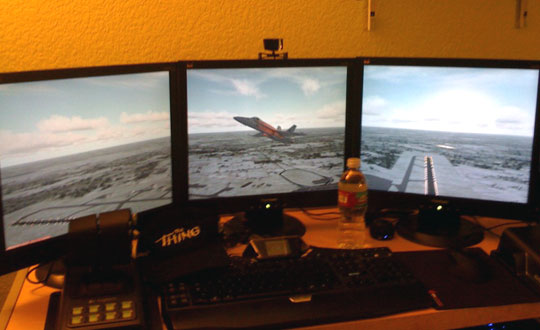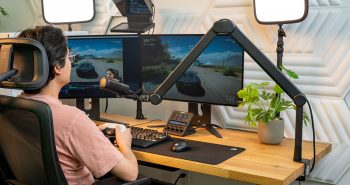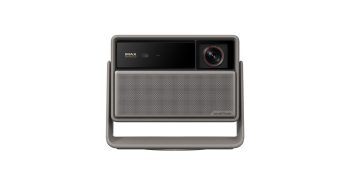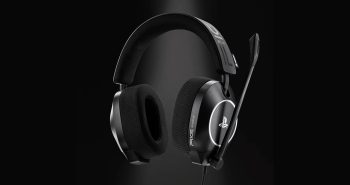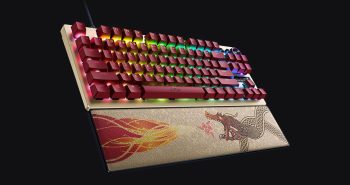The dream of owning one of those sweet, personal home cockpits has always interested me, ever since I began playing around with flight simulation in the days of Microsoft’s Flight Simulator 4 (yes, that’s really what it looked like kids).
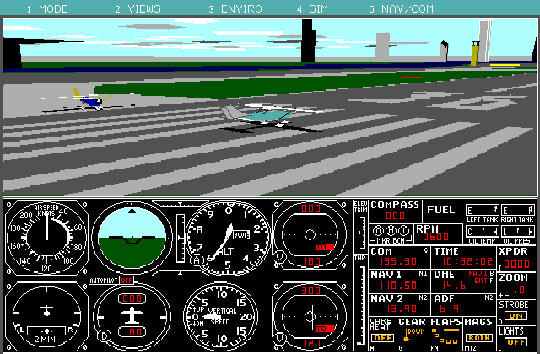
Unfortunately, most of us have to grow up to do things like pay bills, support families, and other expensive tasks that drain away the fun money that we would use, say, to build the aforementioned home flight sim. In today’s modern gaming world, however, there are a number of peripherals and hardware pieces which can get you close however, and a huge step towards this goal comes in the form of the Matrox TripleHead2Go Digital Edition graphics expansion module. A simple black box with some ports on it, this module will allow you to get ‘surround gaming’ the likes of which you have only had dreams about.
It works some serious graphics magical mojo to take your computer graphics output and span it across up to three displays. The basic gist of the unit goes like so…
First, you use the included DVI-DL cable (which is a lot beefier than your standard DVI-I cable) to attach your TripleHead2GO to your PC’s graphics output. Then, you connect your three displays to the output ports on the TripleHead2Go. One nice thing about the Digital Edition of the TripleHead2Go is that it runs off of USB power. So you simply connect it to a powered USB 2.0 port and you are off. Booth up the old PC and revel in the stretched-display goodness. Well, almost…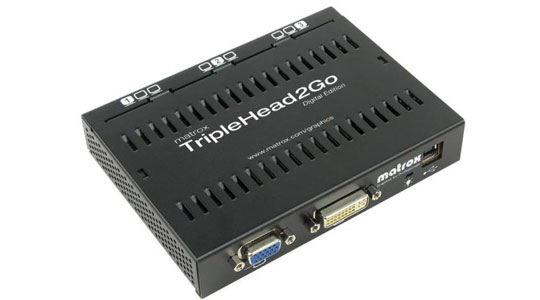
After connecting all the hardware, be sure to install the included software which contains both the SGU (Surround Gaming Utility) and the Matrox PowerDesk utility. The PowerDesk utility is your main way of controlling how windows will appear on your spanned display, you can even set certain windows to pop up on specific monitors. Take Firefox, for example, if you start the program up in fullscreen mode it will span all three screens, but most websites dont utilize 3048×1024 (our spanned display resolution) so you are left with a lot of empty space. You can set Firefox, in PowerDesk, to only show up on one screen – this way you still have two more screens with which to be productive on.
The Surround Gaming Utility is, if you did not guess by the name, Matrox’s game-launcher. You see, not every game will support the high resolutions and some which do, will appear distorted. Your average shooter can sometimes become a wall-eyed nightmare if you are not careful with such wide resolutions. The SGU attempts to configure the games prior to launching in order to circumvent this effect. For instance, Microsoft’s Flight Simulator X was awful when we started it the first time without running the SGU. The view was so close to the cockpit glass in any plane that you could not see any instrumentation. We ran the SGU on the game first and it setup the pliot’s aspect ratio allowing us to see a lot more of the cockpit, making for a much more immersive experience.
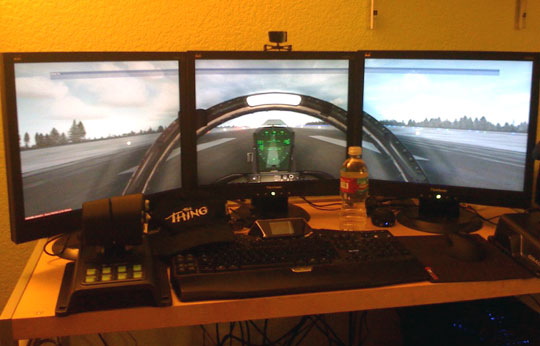
Now, not every game can be configured by the SGU, but Matrox is continually trying to add game’s to its library. This is honestly the major drawback of the TripleHead2Go: Some games just are not compatible with the unit. When the TripleHead2Go encounters a resolution it cannot handle, we experienced a strange, ‘scattered’ graphical effect and complete computer lockup. In order to remedy this we had to forcefully shutdown the PC and then unplug and reinsert the TripleHead2Go’s USB cable. This makes certain titles just unplayable if you have the system.
For the games the TripleHead2Go does support, the experience is incredible. The two games I wanted to try out most on the system were Microsoft’s Flight Simulator X and Valve’s Left 4 Dead. The thought of clouds whooshing by me on all three sides and checking corners for zombies simply with my peripheral vision was too enticing to pass up.
For FSX, the experience (after the previously-mentioned SGU config) was stunning. Seeing the horizon span out in front of my gave the simulator a whole new life and sense of realism. We included a popular head-tracking unit for even more seamless immersion.
What I found most interesting was that we experienced no detectable performance loss running in the wider resolution. Some games, such as Combat Mission Shock Force did see a noticeable performance loss, but not in this case. I am not sure if it is an issue of programming but FSX is one complicated piece of software and it ran fine.

Left 4 Dead was equally-incredible with only minor aspect issues on each of the peripheral screens. The biggest issue with the game was that the user interface elements got pushed to these peripheral screens making checking health a less-fulfilling experience. What was once right in your field of view now takes a more head-turning movement which can lead to a loss of perspective on what is coming at you. There are third-party mods which can fix this, brining the UI elements back to the center screen. Unfortunately, due to a technical issue we could not bring you images of Left 4 Dead in play on the three monitor setup. However, we found some images from Matrox’s Surround Gaming website which will illustrate the effect.
As I mentioned, you can see a bit of stretching on the side monitors but it does not hamper the effect at all. Usually, you are focused on the center screen so that your peripheral vision picks up whats happening on the side screens.
Matrox’s TripleHead2Go graphics expansion module is an incredible upgrade for game’s which support its wider resolutions. While there are definitely some bugs to be worked out with Matrox’s TripleHead2Go graphics expansion module, I can’t think of a better system to top-off your home cockpit. Now alls I need is a motion platform… Hmmm…
The TripleHead2Go Digital Edition retails for roughly $299 and is available through a multitude of online and brick & mortar retailers.
